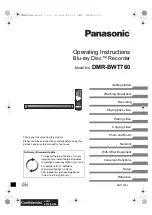
62
Beyond the Basics
MD4—Owner’s Manual
Pitch
Adjusting the pitch is a common multitrack technique. It’s useful when recording instruments
that are slightly out of tune. For example, you’ve recorded the drum and bass parts and now it’s
time to record the acoustic piano part. However, the piano is a little flat. The easy way around
this problem is to record the piano part at a lower pitch with the pianist playing a little slower.
When you play back the recording at normal pitch, the piano part is in tune with everything else.
The Pitch function can also be used when recording a vocal phrase with high notes that a vocalist
cannot quite reach. For example, drums, bass, guitar, and lead vocals have already been recorded.
Now it’s time to record the vocal harmonies. The vocalist, however, cannot quite reach some of
the high notes. The easy way around this is to record the harmony part at a reduced pitch with
the vocalist singing a little slower. When you play back the recording at normal pitch, you have
the high notes of the harmony and they’re in tune with everything else.
A more advanced pitch technique that can be used to capture a super-fast guitar solo, which is
difficult to play repeatedly, is to detune your guitar so that it matches the reduced pitch of MD4.
Then record the solo at the slower speed and pitch. When you play back the recording at normal
pitch, you have a super-fast guitar solo that’s in tune with everything else.
Monitoring
Whether you use CUE or STEREO for monitoring depends on your recording method. For
example, if after recording the first track you do not intend to use Input Channel 1 again (i.e.,
other sounds will be recorded via other channels), you can use STEREO to monitor Track 1.
This allows you to pan the track and apply some EQ. Essentially, you can start building up your
final mix. If, however, you intend to use Input Channel 1 again to record another music source,
it’s best to use CUE to monitor Track 1. If you to use the punch in/out functions, you must use
CUE for monitoring.
















































